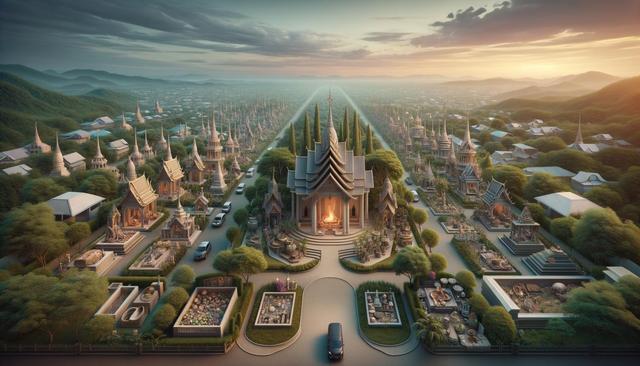
Understanding Cremation
What is Cremation?
Cremation is a method of final disposition whereby a deceased person’s body is reduced to ashes through the application of intense heat. This process is typically carried out in a crematorium, using a specially designed furnace known as a cremation chamber. While cremation has gained popularity in many parts of the world, it is not a new practice. Historical evidence shows that cremation was practiced in ancient cultures, including Greece, Rome, and parts of Asia. Today, cremation is chosen for various reasons, including cultural beliefs, environmental concerns, cost, and personal preference.
Modern cremation is a carefully regulated and respectful process. It usually begins with the placement of the body in a combustible container, followed by incineration at temperatures ranging from 1,400 to 1,800 degrees Fahrenheit. After the process is complete, the remaining bone fragments are ground into a fine powder, commonly referred to as ashes or cremains. These remains are then returned to the family in an urn or container of their choosing.
Reasons People Choose Cremation
There are several motivations behind the decision to choose cremation over traditional burial. For many, the decision is influenced by personal, spiritual, or environmental factors. One of the most common reasons is the reduced cost compared to a traditional burial, which can involve expenses such as a casket, burial plot, and headstone. Additionally, cremation offers greater flexibility in memorial planning, allowing families to schedule services at a convenient time or place.
Common reasons for choosing cremation include:
- Lower overall cost compared to burial
- Desire for a simplified, less traditional ceremony
- Environmental considerations, such as reduced land use
- Religious or philosophical beliefs supporting cremation
- Portability of remains for scattering or storage
In some families, cremation is becoming a preferred method passed down through generations, making it part of their evolving cultural practices.
The Cremation Process Explained
Understanding the cremation process can help alleviate some of the uncertainty or discomfort surrounding this choice. After proper documentation and family consent, the body is identified and placed in a cremation container. Cremation itself takes approximately two to three hours, depending on the body’s size and the equipment used. Once the process is completed, metal remnants such as surgical implants are removed, and the remains are processed into a fine powder.
The ashes are then transferred to a temporary container or a chosen urn. Families may choose to keep the remains, place them in a columbarium, or scatter them in a meaningful location. Many crematories and funeral homes also offer additional services such as:
- Memorial ceremonies with or without the remains present
- Assistance with scattering ceremonies
- Custom urns and keepsakes
- Pre-planning services for cremation arrangements
Transparency and care are key principles in the cremation process, ensuring families are respected throughout each step.
Legal and Cultural Considerations
Legal requirements for cremation vary by region, but generally include obtaining a death certificate, a cremation authorization form signed by the next of kin, and sometimes a waiting period before the procedure can be performed. In some areas, there are also health and safety inspections to ensure that cremation facilities meet regulatory standards.
Cultural and religious perspectives on cremation differ widely. While some faiths, such as Hinduism and Buddhism, traditionally embrace cremation, others may discourage or prohibit it. For example, certain Christian and Islamic denominations prefer burial due to theological beliefs about the body’s sanctity. As cultural norms evolve, however, many religious communities have become more open to cremation as a valid and respectful option.
It’s important for individuals and families to consider these factors when making end-of-life choices, and to communicate their wishes clearly through legal documents or family discussions.
Memorial Options After Cremation
One of the unique aspects of choosing cremation is the wide range of memorialization possibilities it offers. Families are not limited to a single location or type of ceremony and can tailor services according to their values and preferences. Ashes can be kept in urns at home, placed in memorial gardens, or scattered in natural settings. Some people choose to divide the ashes among family members in smaller keepsake urns or jewelry.
Popular memorial options include:
- Scattering ashes at sea, in forests, or on private land
- Placing remains in a columbarium niche
- Creating biodegradable memorials such as tree pods
- Incorporating ashes into artwork or custom-made glass
- Hosting a celebration-of-life ceremony in a meaningful location
These personalized approaches can provide comfort to loved ones and allow for ongoing remembrance. Many find that creating a unique tribute helps with the grieving process and provides a lasting sense of connection to the deceased.
Conclusion
Cremation offers a respectful and flexible alternative to traditional burial, accommodating a wide range of cultural, financial, and personal preferences. As societal views continue to shift, more people are exploring cremation as a meaningful way to honor their loved ones. By understanding the process, legal considerations, and memorial options, families can make informed decisions that align with their values and provide comfort during a difficult time. Whether chosen for its simplicity, affordability, or environmental benefits, cremation remains a thoughtful and increasingly common choice in end-of-life planning.